I had always expected my path to cross with that of the poet Suga-san. Strangely, the opportunity never presented itself until now — in a fika session themed around walking no less! We were both sitting still but all the while walking in our minds. I had a great time engaging in multi-directional communication only possible through words.
ー Seiko Ito
Ito: Today, I thought we could explore the link between walking and words.
Suga: I like walking. Since around 2008, I’ve been collaborating on a walking project with the painter Ai Sasaki—that’s her work here—where she takes in the scenery and develops ideas, and I take what comes into view and express it in words. Her drawings and my handwritten poems then go on display side by side. We’ve made about 30 works to date. Back in the beginning, it was walking that set us humans apart as a species. When we take each step forward, it stimulates the soles of our feet, and we experience the atmosphere, the temperature, the humidity through the skin with our whole body. We are also constantly having to decide where to put the other foot next. That’s why walking revitalizes our presence and gives us a moment to revisit ourselves. As we walk, some of us withdraw inside, some of us turn our attention outward and discover new things. Do you walk, Seiko-san?
Ito: I try to avoid riding taxicabs when possible. Today, I took the subway to Shibuya and got lost on the way to meet my manager, as always. Getting lost is the best part. It’s what makes walking exciting. As I walk, I’m thinking, my exit might or might not be B-something. I walk not so I can collect my thoughts, but rather so I can stir them up.
Suga: That thing you’re stirring up, it might be time. Words, by nature, are oriented to the past. When expressed in words, even the present and the future are drawn from the past. Words are essentially stored in the past, and we pick the words we use out of pools, little by little. Words are a portable time machine that lets us travel through space and time.
Ito: If words are always looking back, and I think in words while walking forward, then in a sense, would I be traveling in two directions simultaneously?
Suga: Yes, exactly! My rule of thumb is to get on the train from the next-closest station, and get off one station before my destination. I wrote a one-line poem and made it my motto: “Two stations on foot in the Mongoloid spirit.”
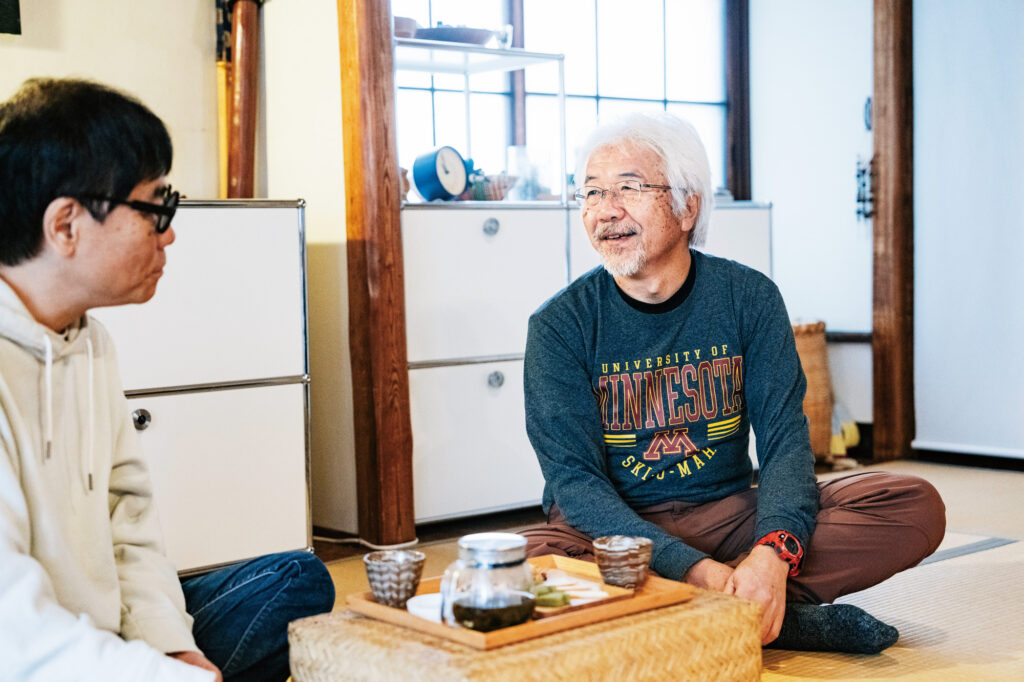
Ito: I once formed a “city alpine club” and tracked the number of steps I walked up and down each day. Tokyo has an unbelievable amount of ups and downs, you know. All Tokyoites are mountaineers without knowing it.
Suga: I’d like to join that club! At some point—I’m not sure when—I started using the Oedo Line a lot.
Ito: The Oedo Line, now that’s a tremendous adventure. It runs so deep underground that the stairs leading to ground level go on for a desperate eternity. Speaking of eternity, I have an eccentric friend who studies humanity and dinosaurs, and he says the most distinguishing feature of humans is that we can go on walking for eons. Other animals may be able to run fast, but they won’t spend a whole day just walking. Only early humans kept roaming along the coastline until we left Africa and eventually arrived here.
Suga: Your friend is so right. A character in Bruce Chatwin’s In Patagonia says “My God is the God of Walkers.” Chatwin’s soulmate, the filmmaker Werner Herzog, once walked from Berlin to Paris through the chill of winter. A film critic who was his friend and mentor had fallen gravely ill, and Herzog walked on and on, believing that if he did so, his friend would not die. And she really lived. This is a true story that I love. Chatwin and Herzog walked with purpose—it was their way of praying. They had that in common. Fascinating.
Ito: That they walked with their whole heart.
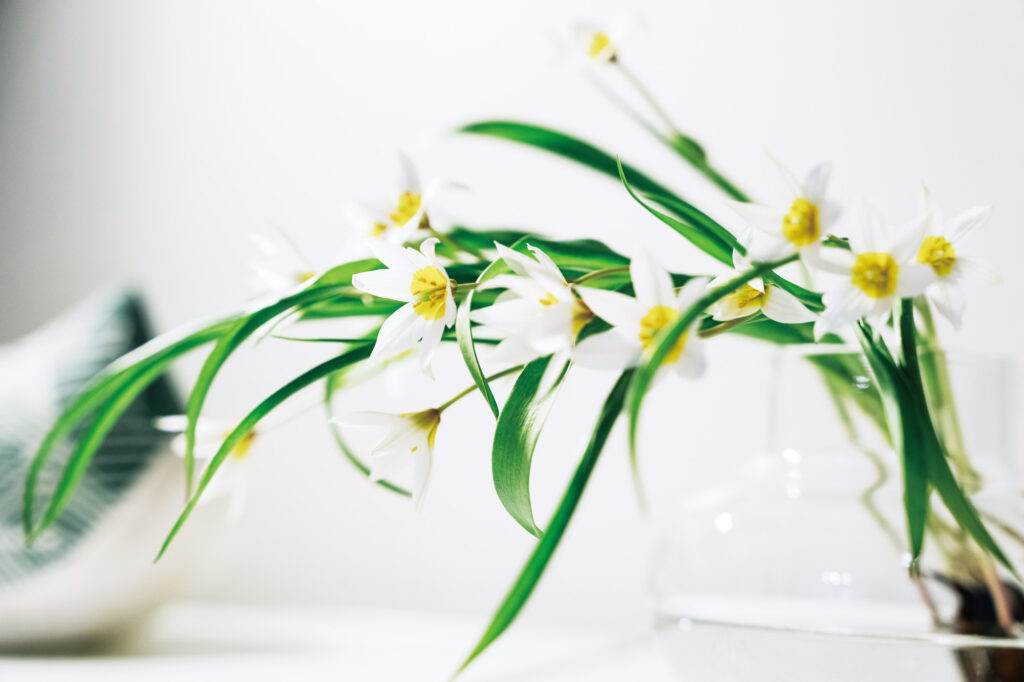
Suga: So, early humans migrated out of Africa. Why do you suppose they started walking in the first place?
Ito: That friend of mine says they must have been picking up food as they traveled along. They ate the shells and fish that had been washed ashore, then made the next forage to find food, and so on.
Suga: That sounds right. I think footprints are significant too. Like other animals, early humans must have found footprints and decided whether to avoid or follow the trail. Then they did that again, and again, and that’s how they kept moving on.
Ito: Animals aren’t the only walkers either. My friend the late horticulturist Shingo Yagyu always said plants are walking. We just don’t notice it because their walking speed is different from ours. Climate change is causing alpine plants to grow at higher and higher elevations. That’s an example of plants walking in the eyes of horticulturists.
Suga: Whole forests are walking too, over a span of generations of time. That line in Macbeth is true: “The Wood began to move.” The problem is that humans only think in terms of our own life span, say 70 to 80 years. If we could only stretch our imagination and expand our thinking to about four time scales—hundreds, thousands, ten thousands, and hundred thousands of years—then we would make a breakthrough in many modern issues.
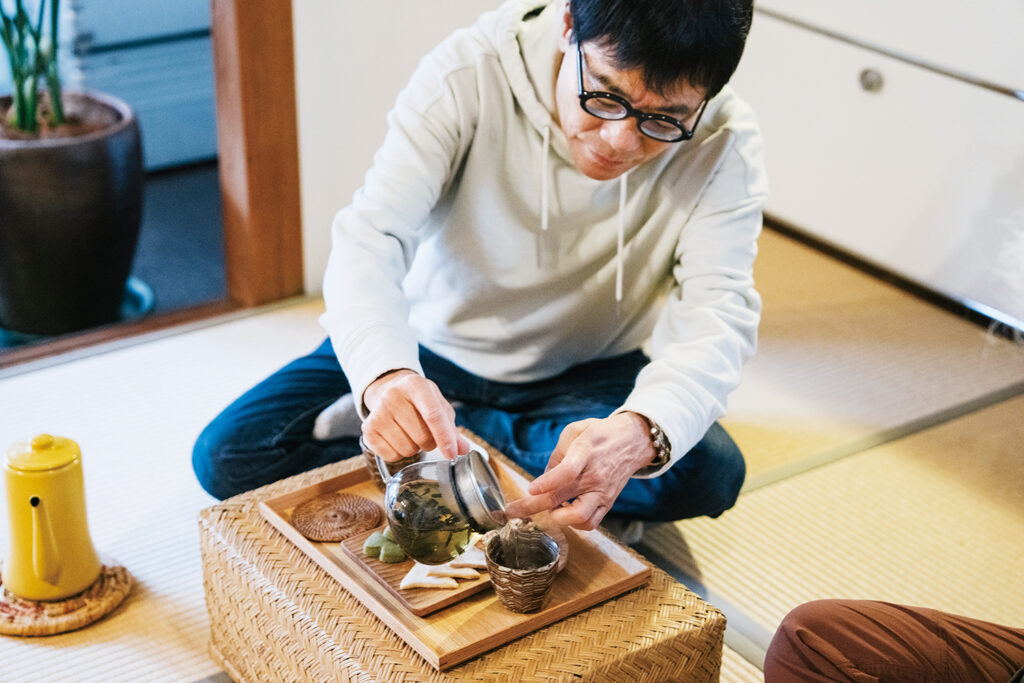
Ito: If we could imagine that a tree has been living for a thousand years, we would think twice about cutting it down. “Every tree is a forest”—I wrote this poem to support the protest against the felling of trees in Jingu Gaien park. Each tree may look like an individual unit, but no, it’s a complex ecosystem home to all kinds of insects and parasites. Chopping down a single tree kills countless lives.
Suga: Even humans are a complex system of diverse organisms. We should know that already thanks to language, because language cannot be reduced to an individual unit. I think everyone should take a moment to think about what it was like a hundred years ago, a thousand years ago. Think about a time in which we were yet unborn, that is, a time in which we were dead. When we project something from the past in the future and acknowledge it as dead, we come to the conclusion that life and death exist simultaneously in our present lifetime. It’s important that we all embrace that perspective. When I’m walking in the woods, everything that comes into view is a complex system of life and death. The woods are always, all the time, a complex system of life and death, and—this is very important—that system is alive. By walking, I become part of that system, and when I am no longer able to walk, I will be absorbed into it. That is the happiest ending I can imagine.
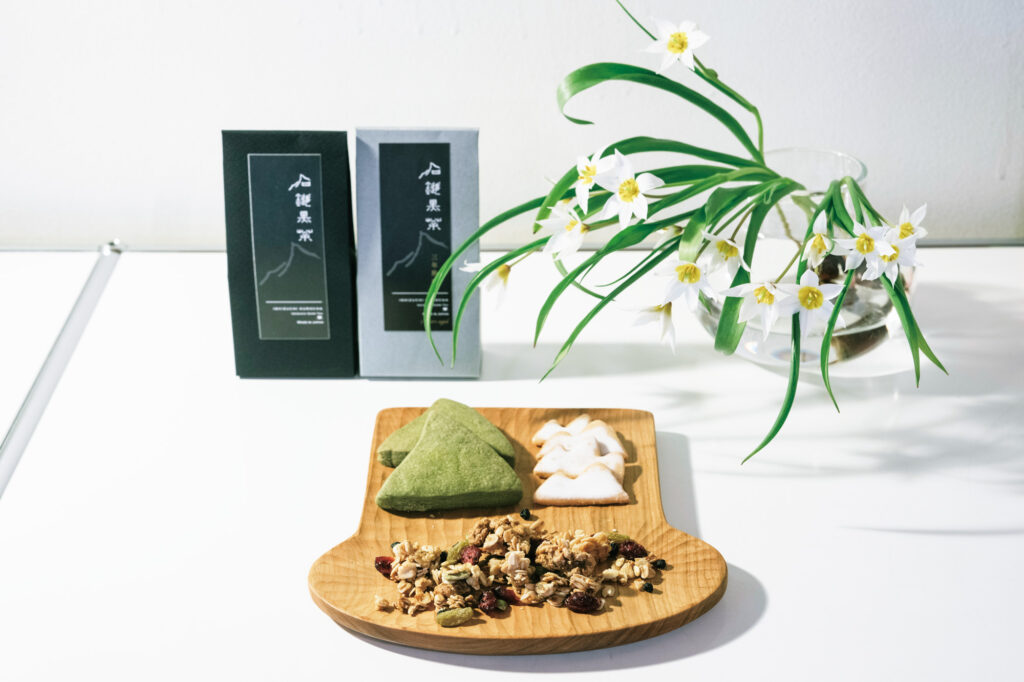
Japanese Fika Table
Tea:Ishizuchi Kurocha from Satsukikai
Kurocha, or black tea, is a rare post-fermented Japanese tea made in the foothills of the sacred Mt. Ishizuchi in Saijo City, Ehime Prefecture. All processes are completed by hand in the traditional style dating to the Edo period (1603–1868). The tea leaves are first steamed, then packed into wooden tubs for fermenting in Mt. Ishizuchi. This creates a mild acidity not present in green tea. The production method is designated an Intangible Folk-Cultural Property of Japan.
Sweets:Mt. Ishizuchi shortbread from Alku
Alku’s owner is a mountain aficionado who offers modestly sweet cakes and granolas that are perfect for enjoying on the trail. Mt. Ishizuchi shortbread, baked in handmade molds, are a feast for the eyes as well as the palate.
Flowers:Wild flowers of a nostalgic landscape
Hilde is an original tulip species with dainty whisper-pink flowers. Here, the flowers down to the lovely round bulb are showcased in a blown glass vase by Tomoko Inaba.
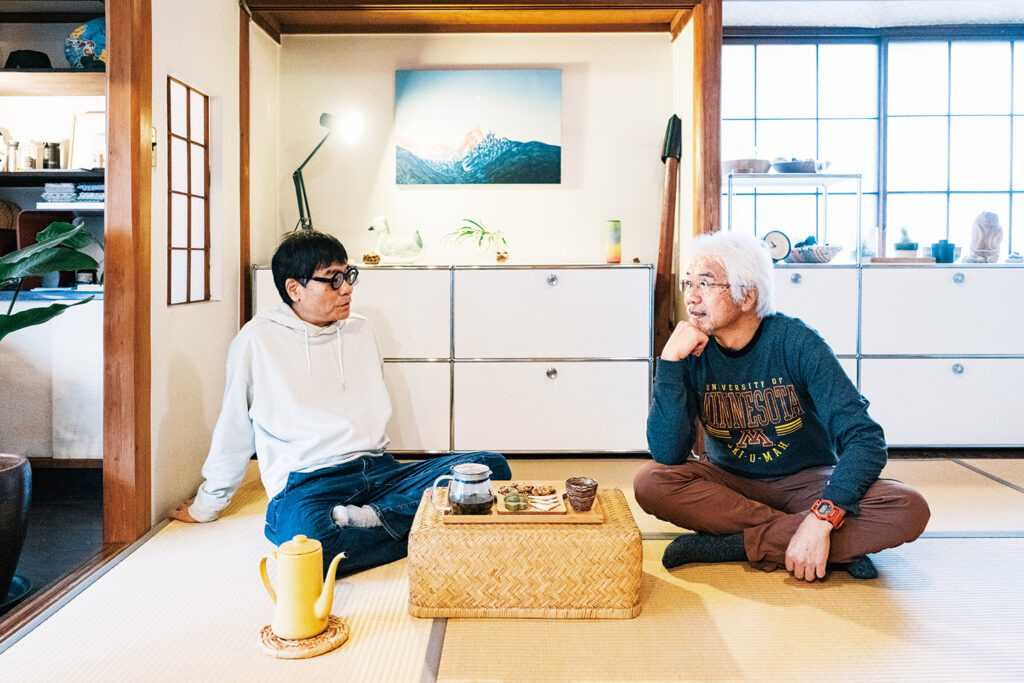
Keijiro Suga, Poet
Born in 1958, Keijiro Suga is a poet, translator, comparative literature researcher, and professor in general cultural studies at Meiji University School of Science and Technology. Suga is the author of critical travel journals and essays including Columbus’s Dog and The Moon When the Wolves Run Together. He won a Yomiuri Prize for Literature in 2011 for Transversal Journeys. Recent publications include a volume on literary critique and theory Books and Shells and the poetry collection One Week and Other Jaunts.
Seiko Ito
Born 1961 in Tokyo, Seiko Ito is an author and creator who works in a spectrum of expressive genres including literature, film, stage, music, and online platforms. His latest publications include Warera no Makino Tomitaro! (Our Beloved Tomitaro Makino!; Mainichi Shimbun Publishing) and Ima sugu shiritai Nihon no denryoku: Asu wa kocchi da (Electric Power in Japan: Quick Guide to Tomorrow; Tokyo Kirara).











